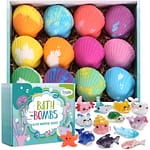
How to Extend Shelf Life: A Quick Guide to Properly Storing Food
Storing food properly is an essential part of keeping your kitchen organized and ensuring that your food stays fresh for as long as possible. Proper food storage can help you save money by reducing food waste, and it can also help you maintain a healthy diet by keeping your fresh produce and other perishables in top condition. In this article, we will explore some of the best practices for food storage to help you extend the shelf life of your groceries.

Understanding food preservation is an important part of storing food properly. Different foods require different storage techniques to maintain their freshness, so it’s important to know which foods need to be refrigerated, which foods can be stored in the pantry or cupboard, and which foods can be frozen for later use. By understanding the basics of food preservation, you can make sure that your food stays fresh and safe to eat for as long as possible.
Overview on Storing Food
Key Takeaways
- Proper food storage can help you save money and maintain a healthy diet.
- Understanding food preservation is key to storing food properly.
- Refrigeration, freezing, and pantry storage are all important techniques for extending the shelf life of your groceries.
Understanding Food Preservation
Preserving food is an essential aspect of extending the shelf life of food. Proper food preservation can help prevent spoilage and food waste, while also maintaining the quality, texture, and flavor of the food. In this section, we will discuss the key factors that affect food preservation.
The Role of Temperature in Food Storage
Temperature plays a crucial role in food preservation. The ideal temperature for storing food varies depending on the type of food. For example, refrigerated foods should be stored at temperatures between 32°F and 40°F (0°C and 4°C), while frozen foods should be stored at temperatures below 0°F (-18°C).
Storing food at the correct temperature can help slow down the growth of bacteria, mold, and other microorganisms that cause spoilage. It is important to note that storing food at the wrong temperature can lead to foodborne illness and other health problems.
Moisture and Humidity Control
Moisture and humidity also play a critical role in food preservation. High humidity levels can cause food to spoil quickly, while low humidity levels can cause food to dry out and lose flavor.
To preserve food properly, it is important to store it in a dry, cool, and well-ventilated area. Additionally, it is important to keep food in airtight containers to prevent moisture from entering and causing spoilage.
Recognizing Spoilage Signs
Recognizing the signs of spoilage is essential to prevent food waste and foodborne illness. Some common signs of spoilage include mold growth, foul smell, unusual color, and changes in texture.
It is important to inspect food regularly and discard any food that shows signs of spoilage. Additionally, make sure to follow proper food storage guidelines to prevent spoilage from occurring in the first place.
In summary, understanding the key factors that affect food preservation is essential to extend the shelf life of food. By controlling temperature, moisture, and humidity levels, and recognizing the signs of spoilage, we can preserve food properly and prevent food waste and foodborne illness.
Refrigeration Techniques
When it comes to extending the shelf life of fresh food, proper refrigeration techniques are essential. Here are some tips to help you optimize your refrigerator settings, use crisper drawers effectively, and store dairy and eggs for maximum freshness.
Optimizing Refrigerator Settings
To keep your food fresh, it’s important to set your refrigerator to the appropriate temperature. The ideal temperature range for a refrigerator is between 35°F and 38°F (1.6°C and 3.3°C). Keeping your refrigerator within this range will help prevent the growth of bacteria and other harmful microorganisms.
It’s also important to avoid overloading your refrigerator, as this can impede air circulation and cause certain areas to become too cold or too warm. To optimize air circulation, try to leave some space between items and avoid blocking air vents.
Proper Use of Crisper Drawers
Crisper drawers are designed to help keep fruits and vegetables fresh by maintaining a high level of humidity. To use them effectively, it’s important to understand how they work.
Most refrigerators have two crisper drawers, one for fruits and one for vegetables. The fruit drawer is designed to maintain a low humidity level, while the vegetable drawer is designed to maintain a high humidity level.
To make the most of your crisper drawers, be sure to store fruits and vegetables separately and adjust the humidity settings as needed. If your refrigerator has a humidity control, use it to adjust the level of humidity in each drawer.
Storing Dairy and Eggs
Dairy products and eggs are some of the most perishable items in your refrigerator, so it’s important to store them properly to extend their shelf life.
Milk, yogurt, and cheese should be stored on the bottom shelf of your refrigerator, where the temperature is the most consistent. Hard cheeses, such as cheddar or Parmesan, can be stored in the refrigerator door, where the temperature is slightly warmer.
Eggs should be stored in their original carton on a shelf in the main compartment of your refrigerator. Avoid storing them in the refrigerator door, as this area is subject to temperature fluctuations.
Freezing for Longevity

Freezing is a great way to extend the shelf life of many foods. When done correctly, freezing can preserve the quality and freshness of food for months. Here are some best practices for freezing foods:
Best Practices for Freezing Foods
- Freeze foods at their peak freshness. This will help ensure that the food retains its quality and flavor.
- Use freezer-safe containers or bags. These are specially designed to withstand the cold temperatures of the freezer and prevent freezer burn.
- Label and date all frozen foods. This will help you keep track of what you have in the freezer and when it was frozen.
- Freeze foods in small portions. This will help you thaw only what you need and prevent waste.
Preventing Freezer Burn
Freezer burn is a common problem when freezing food. It occurs when the food is exposed to air and ice crystals form on the surface. This can cause the food to become dry, tough, and tasteless. Here are some tips to prevent freezer burn:
- Use airtight containers or bags. This will help prevent air from getting in and ice crystals from forming.
- Remove as much air as possible from the container or bag before freezing. This can be done by using a vacuum sealer or pressing out the air by hand.
- Place a layer of plastic wrap or wax paper directly on the surface of the food. This will help prevent ice crystals from forming on the food.
Thawing and Reusing Frozen Foods
When it comes time to use frozen foods, it’s important to thaw them properly. Improper thawing can lead to foodborne illness or a loss of quality. Here are some tips for thawing and reusing frozen foods:
- Thaw foods in the refrigerator. This is the safest method and will help prevent the growth of harmful bacteria.
- Use thawed food within 2-3 days. This will help ensure that the food is still fresh and safe to eat.
- Cook thawed food to the proper temperature. This will help kill any bacteria that may have grown while the food was frozen.
By following these best practices for freezing, you can extend the shelf life of many foods and reduce waste. Whether you’re freezing meat, vegetables, fruits, berries, leftovers, or cooked meat, proper freezing techniques can help preserve the quality and freshness of your food. Remember to always label and date your frozen foods, and thaw them properly before using.
Pantry and Cupboard Storage

Proper storage of food items is crucial to extending their shelf life. Pantry and cupboard storage is an excellent way to keep dry goods, canned and preserved items, and fresh produce organized and easily accessible. Here are some tips for storing your food items in the pantry and cupboard:
Dry Goods and Grains
Dry goods and grains are typically stored in the pantry or cupboard. It is essential to keep them in a cool, dry place with good air circulation to prevent moisture buildup. This will help to prevent the growth of mold and bacteria, which can cause food to spoil quickly.
When storing dry goods and grains, it is best to keep them in airtight containers to prevent moisture from getting in. This will also help to keep pests like insects and rodents out. Label your containers with the date of purchase to ensure that you use the oldest items first.
Some common dry goods and grains that can be stored in the pantry or cupboard include rice, dried beans, pasta, flour, and oats. It is important to note that different types of grains have different shelf lives. For example, white rice can last up to 30 years if stored properly, while brown rice has a shorter shelf life due to its higher oil content.
Canned and Preserved Items
Canned and preserved items are also typically stored in the pantry or cupboard. It is important to check the expiration dates on these items before storing them to ensure that they are still safe to eat.
When storing canned goods, make sure to keep them in a cool, dry place away from direct sunlight. This will help to prevent the cans from rusting and keep the food fresh for longer. It is also important to store canned goods in an organized manner, so you can easily see what you have and use the oldest items first.
Some common canned and preserved items that can be stored in the pantry or cupboard include pasta sauce, canned vegetables, and fruits, and pickles. It is important to note that once a can has been opened, it should be stored in the refrigerator and used within a few days.
Storing Fresh Produce
Fresh produce can also be stored in the pantry or cupboard. However, it is important to note that not all produce can be stored this way. Some fruits and vegetables, such as bananas and tomatoes, should be stored at room temperature to prevent them from spoiling too quickly.
When storing fresh produce in the pantry or cupboard, it is essential to keep them in a cool, dry place away from direct sunlight. This will help to prevent moisture buildup and keep the produce fresh for longer. It is also important to store produce in a way that allows for good air circulation to prevent mold and bacteria growth.
Some common fresh produce items that can be stored in the pantry or cupboard include potatoes, onions, garlic, and winter squash. Different types of produce have different storage requirements, so it is important to do your research before storing them in the pantry or cupboard.
Extending Shelf Life of Specific Foods

When it comes to extending the shelf life of specific foods, there are a few things to keep in mind. Proper storage and handling can help to preserve the freshness and quality of fruits, vegetables, meat, fish, poultry, bread, and baked goods. Here are some tips for extending the shelf life of specific foods:
Fruits and Vegetables
Fruits and vegetables can be some of the most challenging foods to store properly. Some fruits and vegetables, such as apples, bananas, and tomatoes, can emit ethylene gas, which can cause other produce to ripen and spoil more quickly. To prevent this, store ethylene-producing fruits and vegetables separately from other produce.
Greens such as spinach and lettuce can wilt quickly and become slimy if not stored properly. To keep them fresh, wash and dry them thoroughly before storing them in an airtight container or plastic bag with a paper towel to absorb excess moisture.
Meat, Fish, and Poultry
Meat, fish, and poultry are highly perishable and require careful handling to prevent spoilage and foodborne illness. Always store these items in the refrigerator or freezer, and be sure to cook them to the appropriate temperature to kill any harmful bacteria.
Salmon, tuna, and other fatty fish can go rancid quickly if not stored properly. To extend their shelf life, store them in an airtight container or wrap them tightly in plastic wrap before refrigerating or freezing.
Breads, Pastries, and Baked Goods
Breads, pastries, and baked goods can quickly become stale and dry if not stored properly. To extend their shelf life, store them in an airtight container or wrap them tightly in plastic wrap. You can also freeze bread and baked goods for later use.
By following these tips, we can extend the shelf life of specific foods and reduce food waste. Proper storage and handling can help to preserve the freshness and quality of our food, making it last longer and saving us money in the long run.






































